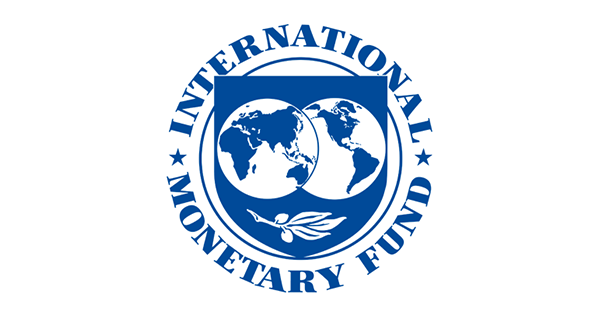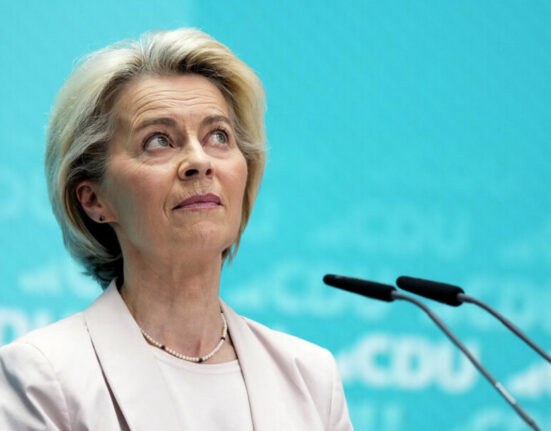IMF Executive Board Concludes 2023 Article IV Consultation with the Republic of San Marino
November 22, 2023
Washington, DC: On November 17, the
Executive Board of the International Monetary Fund (IMF) concluded the
Article IV consultation
[1]
with the Republic of San Marino and considered and endorsed the staff
appraisal without a meeting.
Despite external shocks and higher interest rates, growth has remained
resilient in San Marino. Prudent policies and access to international
capital markets increased policy buffers to healthy levels. Robust external
demand until recently boosted manufacturing and the tourism sector. With
the economy booming, employment reached record levels. The recovery has so
far been resilient to headwinds from higher inflation, tightening financial
condition and weak external demand. However, these factors and heightened
global uncertainty will weigh on activity that is expected to slow down.
Inflation is forecasted to remain elevated but declining in line with
Italian trends.
The successful Eurobond rollover in May 2023 significantly reduced
short-term risks improving domestic liquidity and supporting confidence.
Downside risks relate to the weakening of external conditions, and further
global monetary tightening while domestic risks concentrate on political
uncertainty due to elections next year and remaining vulnerabilities in the
financial sector. The underlying strength of the manufacturing sector and
healthy private sector balance sheets provide some upside risks to the
baseline.
Executive Board Assessment[2]
Executive Directors agreed with the thrust of the staff appraisal. They
welcomed that San Marino has shown remarkable resilience to recent external
headwinds. Directors, however, noted that growth is expected to slow toward
its potential, in the context of tightening financial conditions, weak
external demand, and heightened uncertainty. Noting that risks are tilted
to the downside, Directors emphasized the importance of preserving
macroeconomic stability, restructuring the financial sector, and enhancing
potential growth.
Directors welcomed the improved fiscal position and underscored that
further efforts are needed to reduce debt to below 60 percent of GDP by
2028. Important measures include broadening the income tax base,
introducing a VAT, and improving the efficiency of public spending, by
strengthening public financial management and better targeting social
programs. Directors recommended continued prudent wage and pension
indexation and highlighted that further reforms are needed to ensure the
long-term sustainability of the pension system. They also stressed the need
to develop and communicate a medium-term fiscal and debt strategy.
Directors recognized the considerable progress made in restructuring and
consolidating the banking sector, but highlighted that vulnerabilities
remain especially in a higher interest rate environment. Noting the
elevated nonperforming loans (NPLs), high operational costs, and weak
capitalization in some banks, Directors stressed the need to improve banks’
profitability and capitalization, while avoiding forbearance and limiting
fiscal risks. Directors welcomed the progress in implementing the
authorities’ strategy to reduce NPLs through an Asset Management Company
(AMC) and calendar provisioning. They emphasized the need for credible
capitalization plans to promptly address any undercapitalization that
arises from the implementation of the strategy. Directors also underscored
the importance of a strong governance structure for the AMC to reduce
implementation risks. They encouraged efforts to improve and align the
bank resolution framework with European standards.
Directors recommended strengthening the central bank’s financial position
to safeguard its independence and support financial sector stability. They
also encouraged measures to strengthen the AML/CFT framework.
Directors underscored that structural reforms are critical to support
long-term growth. They highlighted that the Association Agreement with the
EU would enhance economic integration and attract foreign investments.
Directors also stressed that further efforts are needed to increase the
flexibility of the labor market, preserve the financial soundness of the
state-owned utility company, and improve the insolvency framework. Noting
that data provision remains broadly adequate for surveillance, Directors
encouraged further efforts to improve the quality and the frequency of
data.
San Marino: Selected Economic Indicators, 2018–23
|
Est. |
Proj. |
Proj. |
||||
|
2018 |
2019 |
2020 |
2021 |
2022 |
2023 |
|
|
Activity and Prices |
||||||
|
Real GDP (percent change) |
1.5 |
2.0 |
-6.8 |
14.2 |
5.0 |
2.2 |
|
Unemployment rate (average; percent) |
8.0 |
7.7 |
7.3 |
5.2 |
4.3 |
4.0 |
|
Inflation rate (average; percent) |
1.2 |
0.5 |
-0.1 |
2.1 |
5.3 |
5.9 |
|
Nominal GDP (millions of euros) |
1,402 |
1,444 |
1,352 |
1,569 |
1,693 |
1,836 |
|
Public Finances(percent of GDP) 1/ |
||||||
|
Revenues |
23.0 |
22.3 |
21.6 |
20.7 |
22.7 |
20.5 |
|
Expenditure |
24.5 |
22.4 |
59.2 |
37.1 |
22.3 |
22.7 |
|
Overall balance |
-1.6 |
-0.1 |
-37.6 |
-16.4 |
0.4 |
-2.2 |
|
Government debt (Official) |
30.1 |
25.9 |
71.6 |
63.0 |
71.7 |
67.6 |
|
Public debt 2/ |
57.2 |
57.4 |
71.6 |
81.3 |
76.7 |
72.2 |
|
Money and Credit |
||||||
|
Deposits (percent change) |
… |
-11.9 |
3.1 |
3.2 |
1.7 |
… |
|
Private sector credit (percent change) |
-6.7 |
1.0 |
-4.1 |
-10.8 |
0.0 |
… |
|
Net foreign assets (percent of GDP) |
124.8 |
123.5 |
141.4 |
137.3 |
122.8 |
… |
|
External Accounts (percent of GDP) |
||||||
|
Current account balance |
-1.9 |
2.0 |
2.8 |
6.5 |
8.0 |
3.8 |
|
Gross international reserves (millions of euros) |
248.1 |
410.6 |
636.7 |
842.4 |
533.0 |
513.0 |
|
Financial Soundness Indicators (percent) 3/ |
||||||
|
Regulatory capital to risk-weighted assets |
12.3 |
9.5 |
10.7 |
14.4 |
14.6 |
… |
|
NPL ratio |
50.7 |
58.9 |
61.1 |
59.0 |
53.1 |
… |
|
NPL coverage ratio |
58.2 |
63.6 |
64.4 |
65.0 |
69.8 |
… |
|
Return on equity (ROE) |
-17.2 |
-74.6 |
-7.7 |
3.8 |
3.8 |
… |
|
Liquid assets to total assets |
15.2 |
18.0 |
19.2 |
27.3 |
26.5 |
… |
|
Liquid assets to short-term liabilities |
27.6 |
32.7 |
33.1 |
44.0 |
43.1 |
… |
|
Sources: International Financial Statistics; IMF Financial |
||||||
|
1/ For the central government.
2/ Central government (official) debt plus Social Security |
||||||
[1]
Under Article IV of the IMF’s Articles of Agreement, the IMF holds
bilateral discussions with members, usually every year. A staff
team visits the country, collects economic and financial
information, and discusses with officials the country’s economic
developments and policies. On return to headquarters, the staff
prepares a report, which forms the basis for discussion by the
Executive Board.
[2]
At the conclusion of the discussion, the Deputy Managing Director,
as Chairman of the Board, summarizes the views of Executive
Directors, and this summary is transmitted to the country’s
authorities. An explanation of any qualifiers used in summing up
can be found here:
http://www.IMF.org/external/np/sec/misc/qualifiers.htm.
IMF Communications Department
MEDIA RELATIONS
PRESS OFFICER: Meera Louis
Phone: +1 202 623-7100Email: MEDIA@IMF.org






